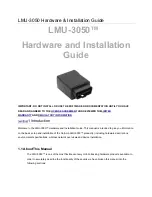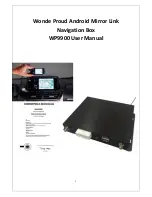
10
2. KIT COMPONENTS
Working with the Transmitter
When the Transmitter is on and connected to the circuit with test leads, it checks for
voltage. A red Voltage Warning Indicator will light up if the Transmitter detects dangerous
voltage levels above 30 V AC/DC.
IMPORTANT!
The Voltage Warning Indicator light will blink when overvoltage (> 650 V AC/DC) is
detected. In case of overvoltage immediately disconnect the Transmitter from the circuit.
This Voltage Waning Indicator is not desinged to check for absence of voltage. Please use a
voltage tester therefore.
If the High (HI) or Low (LO) Signal button is pressed momentarily, the Transmitter starts
generating a tracing signal. Based on the detected voltage, the Transmitter automatically
switches to either:
• Energized mode (30 to 600 V AC/DC) generating 6 kHZ frequency
• De-energized mode (0 to 30 V AC/DC) generating 33 kHz frequency
Energized mode uses a lower transmission frequency (6 kHz) than De-energized mode
(33 kHz) to reduce signal coupling between wires. De-energized mode requires a higher
frequency in order to generate a reliable signal.
Energized mode:
In Energized mode, the Transmitter draws a very low current from the
Energized circuit and generates a 6 kHz signal. This is a very important feature of the
Transmitter, since drawing current does not inject any signal that would harm sensitive
equipment connected to the circuit. The signal is also generated in a direct path between
the Transmitter and the power source, thus NOT placing a signal onto any branches enabling
wiring tracing directly back to the breaker/fuse panel. Please note that due to this feature,
the Transmitter has to be connected on the load side of the circuit.
De-energized mode:
In De-energized mode, the Transmitter injects a 33 kHz signal onto
the circuit. In this mode, the signal will travel though all the circuit branches because it is
injected. The high frequency/low energy signal will not harm any sensitive equipment.















































